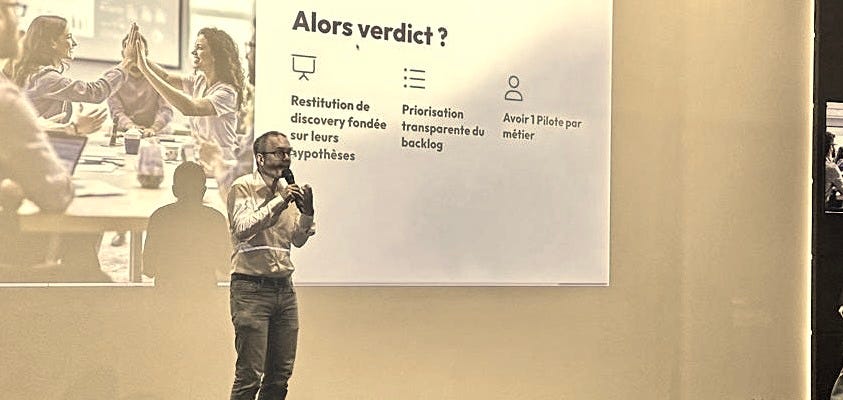Your Gantt Chart Holds True… Until You Print It
(and I’ve Known This for 20 Years)
About twenty years ago, I used to rely on Gantt charts for just about everything. They were my go-to framework for structuring and planning a project: neatly aligned bars, milestones, and deadlines. But the moment you hit “Print,” reality would swoop in, rendering that beautiful diagram obsolete at the first unforeseen constraint.
Since then, we’ve come a long way: we transitioned to Agile, reorganized our teams based on Team Topologies principles, and now depend on Lean Engineering to bring clarity to complex environments. Yet one observation remains: our processes are often built on solutions we’re already familiar with. In today’s ever-evolving world, though, we need to be ready to embrace the unknown.
Processes: Rooted in What We Know, Challenged by What We Don’t
We rely on our existing knowledge to build processes
It’s natural—we leverage past experiences, best practices, and lessons from both successes and failures. That’s the strength of an organization: we don’t start from scratch every time. We draw on what’s proven to work.But today, we operate on shifting ground
The market, technology, and customer needs change rapidly—often in unpredictable ways. That’s why rigid frameworks, whether Gantt or something else, quickly show their limits. The moment we step out of a “known circuit,” we find ourselves improvising, exploring, and adapting our processes.Agility: A Guide, Not a Magic Bullet
Being Agile isn’t just about ceremonies (daily stand-ups, reviews, retrospectives) or waving the “Scrum Guide” around. It’s about accepting that each iteration must confront reality. Continuous adaptation also involves testing new ideas, measuring their impact, and adjusting quickly. The cultural foundation is as important as the methods themselves.Team Topologies: Structuring Teams for Value Delivery
Organizing teams to be autonomous and domain-focused or product-critical reduces handovers, enables faster decision-making, and fosters a closer connection to the end user. The result: more responsiveness and fewer blind spots.
Lean Engineering: Keeping Clarity in the Workflow
If Gantt charts are no longer our static reference, how do we maintain visibility and alignment? For me, the answer lies in Lean Engineering. It’s a comprehensive approach that aims to:
Identify value for the client (or the end user),
Eliminate waste in processes,
Streamline flows from end to end,
Measure and improve continuously.
Instead of locking down a rigid plan, we strive to make the process sufficiently visible and adaptable so everyone knows what to do, when, and for what purpose. Real-time metrics, collaboration between teams (through short, effective rituals), and the ability to pivot quickly all underpin a living, breathing plan.
Conclusion: From Gantt Experience to Navigating the Unknown
Twenty years after my first Gantt charts, I realize the key isn’t to ban planning but to use it in service of a dynamic, value-centered approach. Processes are naturally built on proven solutions to known problems. But for everything we don’t know at the outset—and there will always be something—Agility, Lean Engineering, and teams organized according to Team Topologies principles let us move forward with more confidence.
Ultimately, what truly makes the difference is our ability to embrace uncertainty without losing sight of our end goal: delivering tangible value. The next time someone hands me a printed Gantt chart, I’ll treat it not as an absolute truth but as a starting point—one that will evolve as we make new discoveries. That’s the essence of Agility and Lean: recognizing that the unknown is the norm and organizing ourselves to leverage it.
That’s how, one day, we move from “Your Gantt Chart Holds True… Until You Print It” to “Your Process Is Sound… Until the Unknown Appears.” So why not be prepared?


